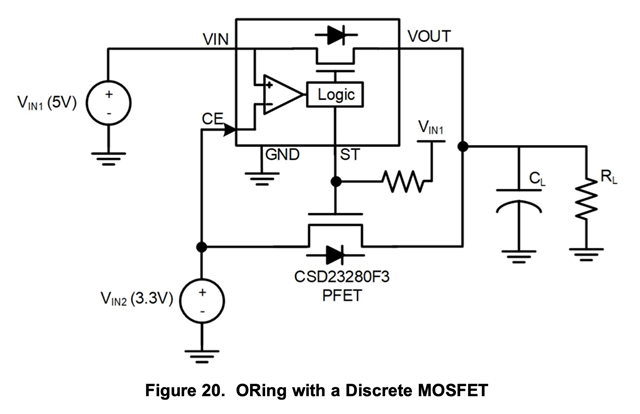Other Parts Discussed in Thread: TPS2116
Hi,
I intend to use the LM66100+PMOSFET as the following design from datasheet

I have some questions which answers I can't find within EVM board or datasheet:
1. I want to double check that the LM66100 works well even if Vin1 is missing (0V) while Vin2 is 2.9V. If main power is disconnected, Vin1 would be floating, is a pull-down resistor at Vin be recommended of 100K-1M?
2. Do you recommend an output capacitor? Or only the 1uF Vin1 input capacitor?
3. The resistor from ST pin to Vin1, is it just acting as pull-up? Do you recommend any value to decrease leakage?
Thanks
Thanks

